Woolly buggers & variants
{{start}}
My understanding is that the Woolly Bugger has its origins in America where it appears to be tied, as a leach imitation. having said that there is also an English fly with bead chin eyes called a Dog Nobler that is very similar to a traditional Woolly Bugger. Whatever the name or origin this style of fly is a great fish taker in a wide range of conditions. There are probably more variations to the Woolly Bugger than I have had breakfasts. Some are over-dressed some under-dressed, some weighted other not, on all sorts of hooks and in all sorts of colour combinations. Most will work sometimes but many are “once of” flies that don’t consistently take or attract fish.
{{end}}

{{+1}}Humungus variant{{-1}}
{{start}}
Tied with a woolly bugger tail that allows movement within the fly, a plain, painted or anodised tungsten bead for the head that encourages up and down movement and of course plenty of fleeting colour as it is stripped through the water this fly is very much a top class pulling fly... and very effective in that role.{{end}}

{{+1}}BH silver surfer{{-1}}
{{start}}
I was ripping the black tailed version of this fly through the chop with some success when my boat partner asked what fly is that 'silver surfer'. I explained to him that it was just a woolly bugger variant tied with a black tail and silver UV straggle fritz. I tried to give it a real name such as 'silver woolly bugger' but unfortunately 'silver surfer' has stuck.{{end}}
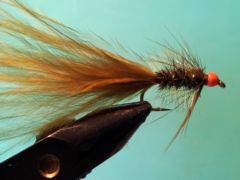
{{+1}}BH olive damsel bugger{{-1}}
{{start}}
At different times of the year you will start to see swallows dipping on the water feeding on midge. This is the time to start thinking about fishing either damsel buggers or olive woolly buggers because unfortunately for the midge it's not only swallows that have them on their menu it's also carnivorous damsel nymphs. Damsel nymphs come in a range of colours ranging from dull browns through to light and dark olives.{{end}}
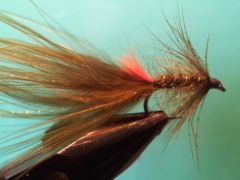
{{+1}}Mark II woolly bugger – alternate tie{{-1}}
{{start}}
The MK 2 woolly buggers evolved from standard black and olive woolly buggers as a fly that would imitate an American frog that had bright red between its hind legs and consequently the red tag is traditionally tied in below the tail. This tie is a little more popular than the original tie these days and is main point of difference is that the tag tied in on top.{{end}}
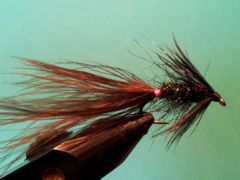
{{+1}}Hot spot yabby bugger – Chatto’s original{{-1}}
{{start}}
Large populations of dark olive Yabbies of the Cherax Genus have developed in both Lake Jindabyne and Lake Eucumbene and many other places. Many anglers suggest that the Yabby has been responsible for changing the feeding habits of trout in the lakes as the populations of Yabbies have increased. In fact in both Lake Jindabyne and Lake Eucumbene you seldom catch a trout with a full stomach when the contents doesn't include yabbies.{{end}}
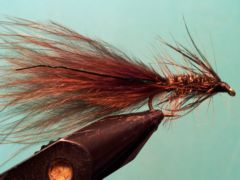
{{+1}}Brown damsel bugger{{-1}}
{{start}}
Unfortunately for the midge it's not only swallows that have them on their menu it's also carnivorous damsel nymphs and then of course further up the food chain trout.{{end}}
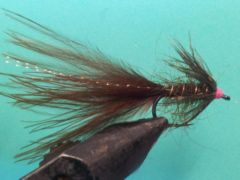
{{+1}}Brown pink hot head bugger{{-1}}
{{start}}
You can of course tie a hot head on any fly and from time to time when I am tying flies I add hot thread head to a couple of flies just to ensure that I have some options in my fly boxes. This fly takes the hot head concept to the next step and includes a bigger than average thread head which is a significant feature of the fly.{{end}}
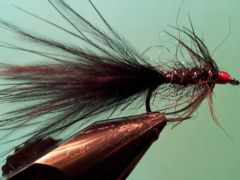
{{+1}}Black and red hot head bugger{{-1}}
{{start}}
I generally only tie it in two versions the fly described below and a brown and pink version. Particularly if the water is a little discoloured I find these flies work well either as middle dropper attractor flies or as my top dropper bob fly but from time to time also fish them on the point particularly if fish are switched onto small flies.{{end}}
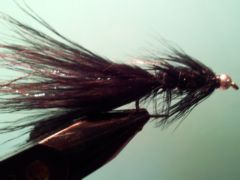
{{+1}}BH woolly bugger{{-1}}
{{start}}
I tie brown, black and olive versions of my bead head woolly buggers for my bugger fly box but its worth keeping in mind that whilst standard combinations like silver bead and wire on a black bugger or a brass beads on an olive or brown bugger work well this fly is a great fly to tie in a few different colour combinations. In any case I like to fish my bead head buggers on the point generally on intermediate to type 5 lines and to muck round with retrieve rates until I find the one working on the day.{{end}}
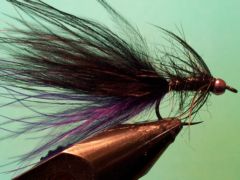
{{+1}}BH Tassi bugger{{-1}}
{{start}}
I have used it and this bead head version many times since to great effect. Like most woolly buggers it is often best when fished with short sharp twitching movements in order to make the marabou and hackle ‘work’ but its worth experimenting with a range of retrieves from dead drift through to “roly poly” to see what's working on the day.{{end}}













